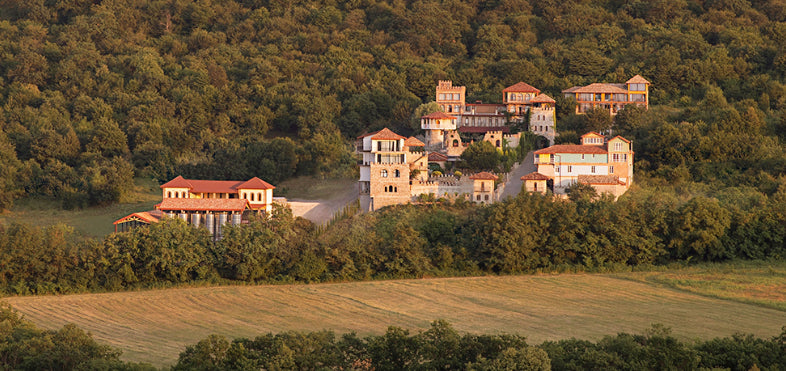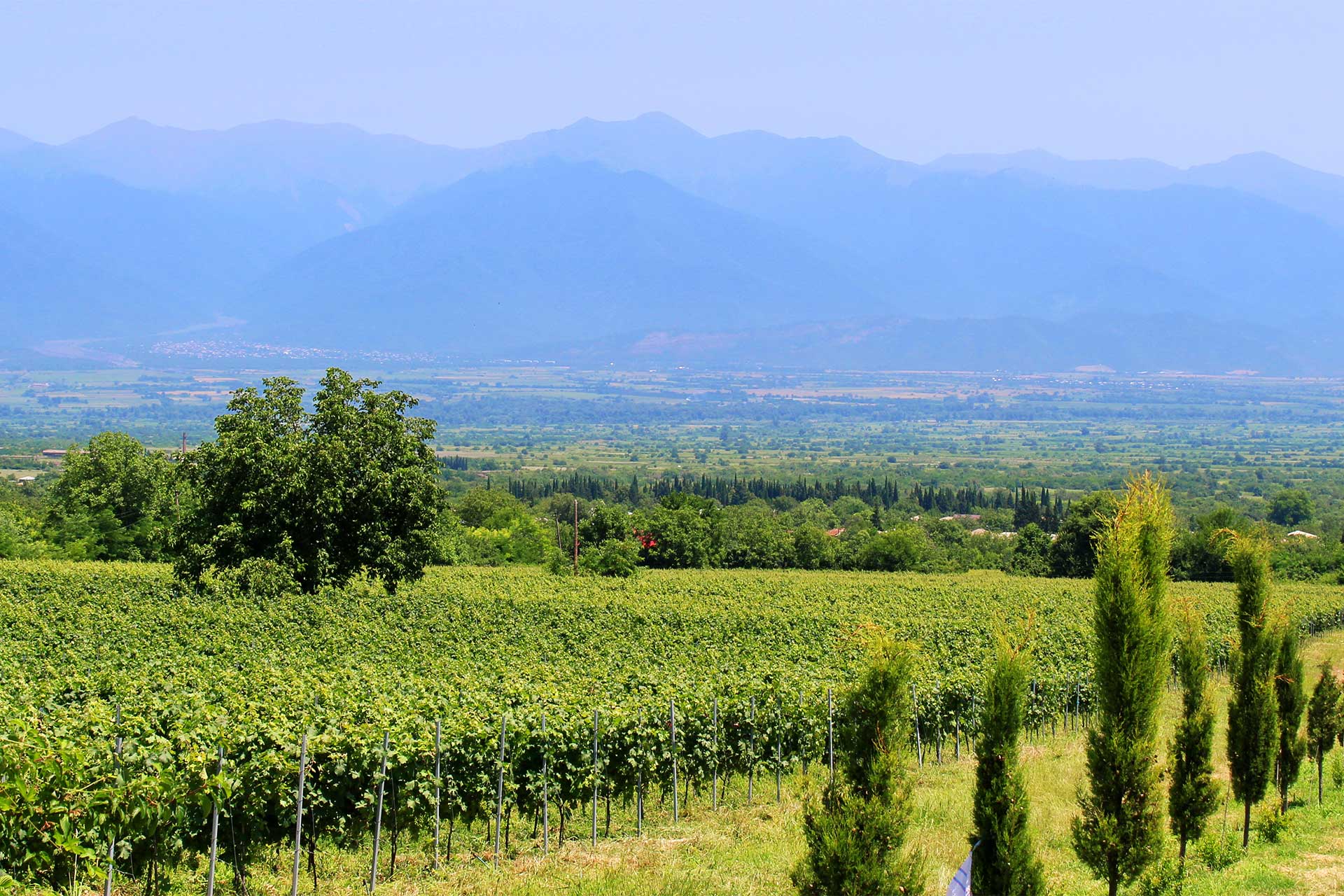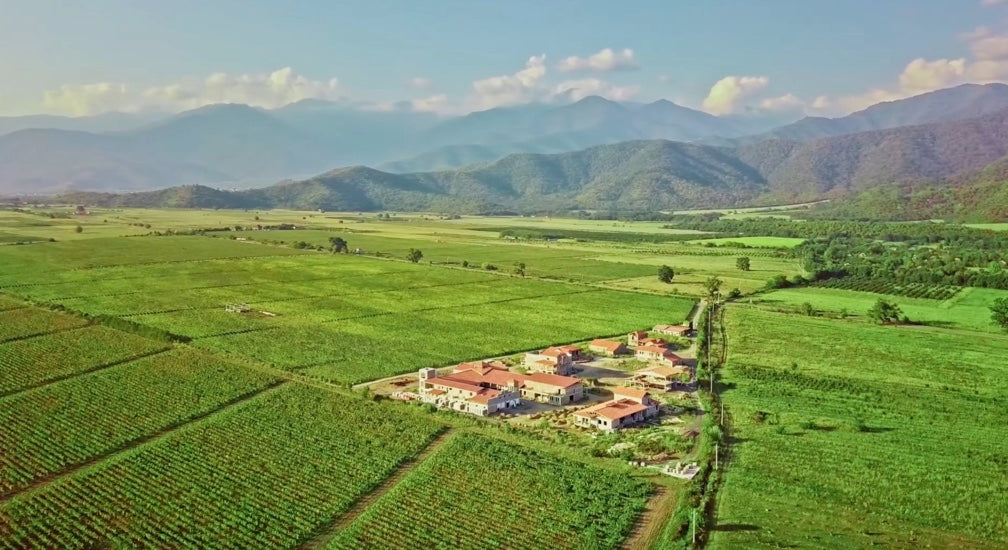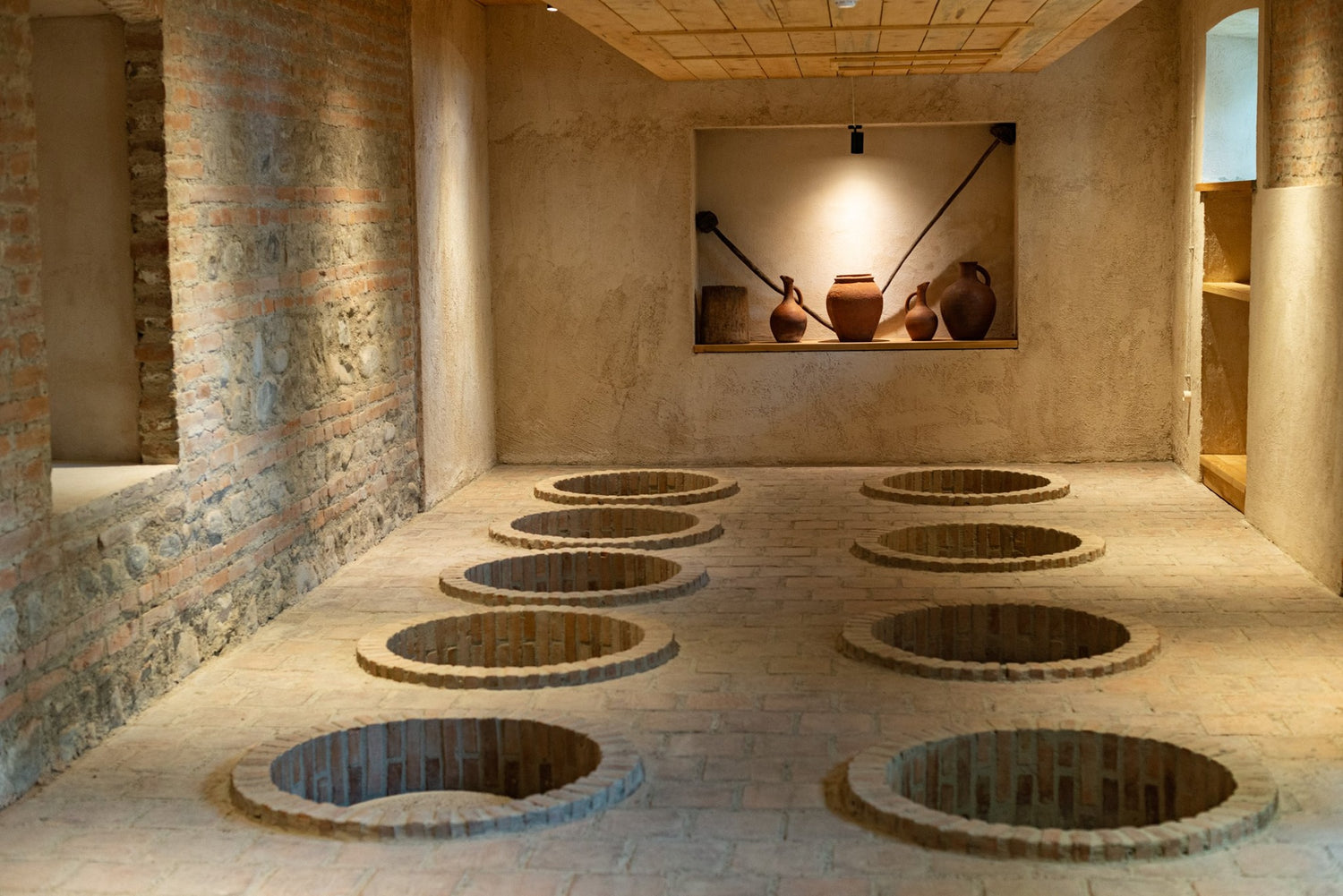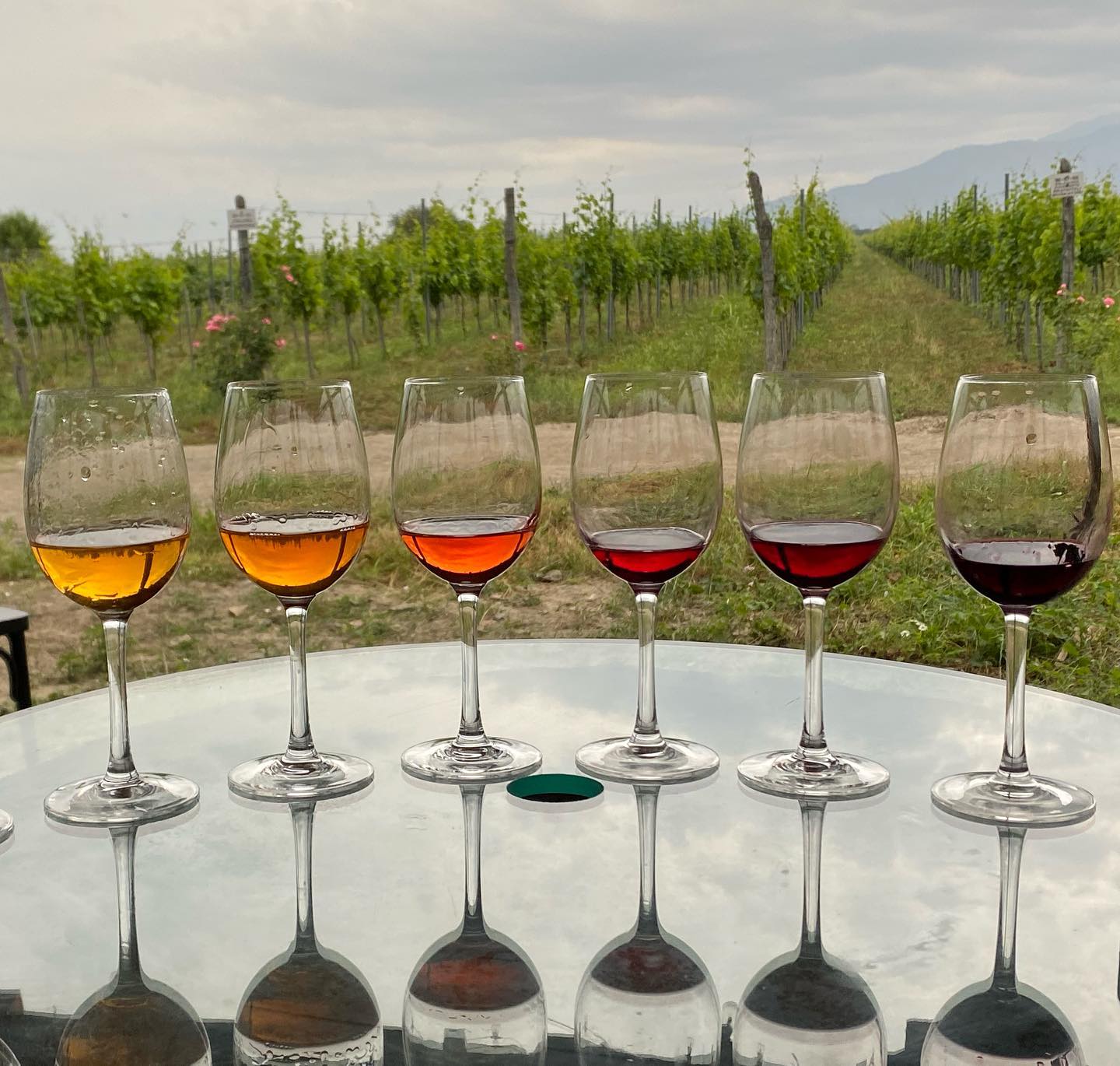Anthony Bourdain described Georgia as “Small compared to the superpowers around it, but vital, its significance far exceeding its relative size.”
The country’s population is just shy of 4 million people — that's a quarter the population of the U.S. state of Georgia, and the country's square mileage is less than half its twin-named state. Small, indeed. But its people and rituals are ancient, veritably vital, and rich with history... and wine. No other country in the world has wine so deeply woven into the fabric of its culture and its everyday life. Georgians have made wine for over 8,000 years, and here, truly, wine seems synonymous with life.

Location, Location, Location... and Wine
Georgia has an incredibly unique location. It's sandwiched between the snow-covered Caucasus mountains that divide it from Russia, the subtropical Black Sea that one could sail across to Europe, and the borders of Turkey, Armenia and Azerbaijan, which lend way to the rest of the Middle East. As one could expect, then, Georgia’s history is steeped with stories of survival, diversification and resilience through centuries of invasions and myriad migrations. Through it all, wine has remained a beloved tradition and a sacred ritual embedded into daily life.
A Passionately Independent Country
Long under the yoke of Imperial Russia and the former USSR, Georgia is now a proudly independent, democratic nation facing strongly to the West with formal European Union Association and NATO partnerships. With open arms and ample wine, it welcomes all who come on friendly terms, but it will fiercely defend its freedom against any who choose to threaten it. The beautiful, 20-meter-tall "Kartlis Deda" or Mother of Georgia statue standing in the capital of Tbilisi demonstrates this: She holds a welcoming wine in her left hand for friends, a sword in her right for foes!
From Repression to Rejuvenation
Yet, in spite of this rich history and tradition, Georgian wine is often received abroad with misconceptions or even unfavorable impressions.
Part of this stems from the USSR's disruption: From 1921 to 1991, industrialization and collectivization were the order under Soviet rule, and unfortunate authoritarian dictates drove quantity over quality, stifling indigenous varieties and mechanizing high-yield production in government-controlled industrial complexes.
Luckily, resilient family vineyards and proud, independent producers saved native Georgian grapes from total extinction and retained an undercurrent of traditional winemaking know-how. Only since the fall of the USSR, coupled with free-market entrepreneurial resurgence, has traditional Georgian winemaking come back to life. And only over the past two decades, through the integration of traditional and modern winemaking techniques, has Georgian wine begun to re-emerge abundantly, with the vibrant quality and range of flavors for which it was once known across many continents.




